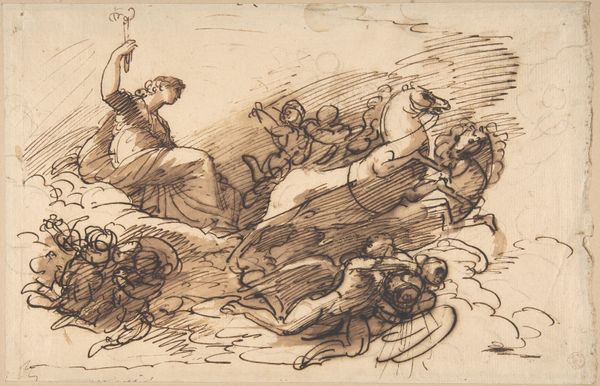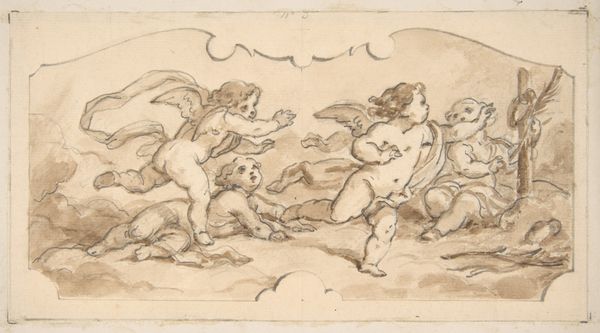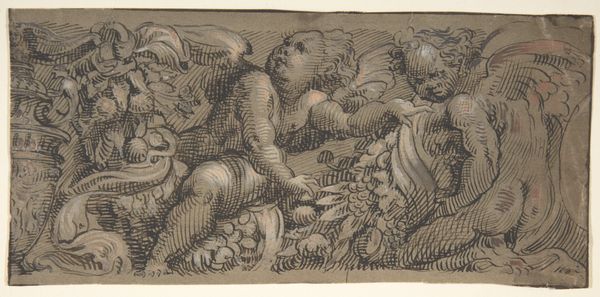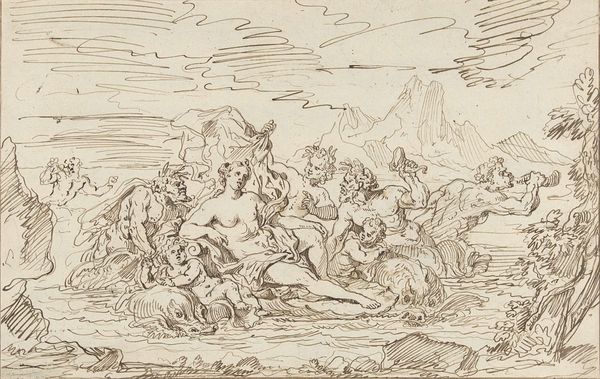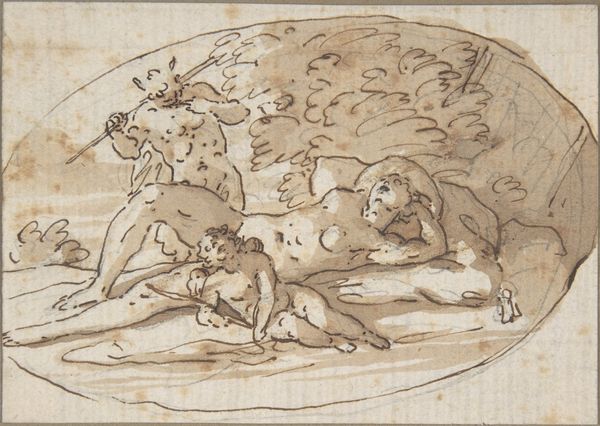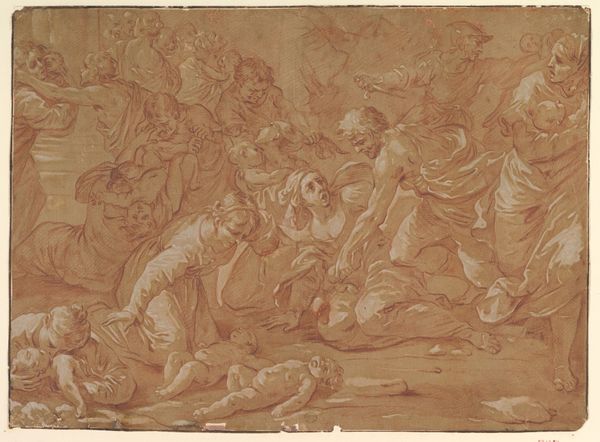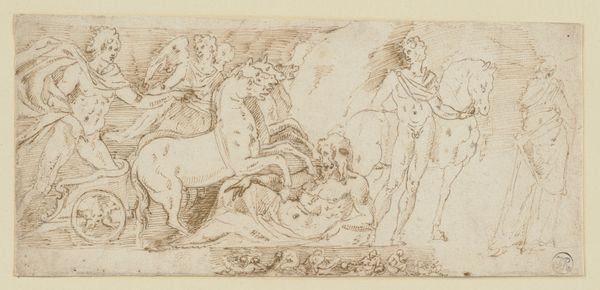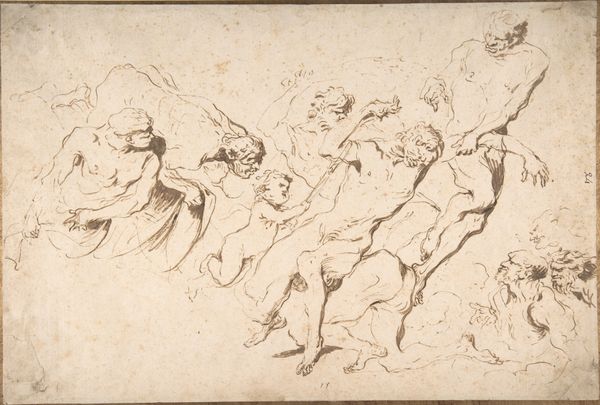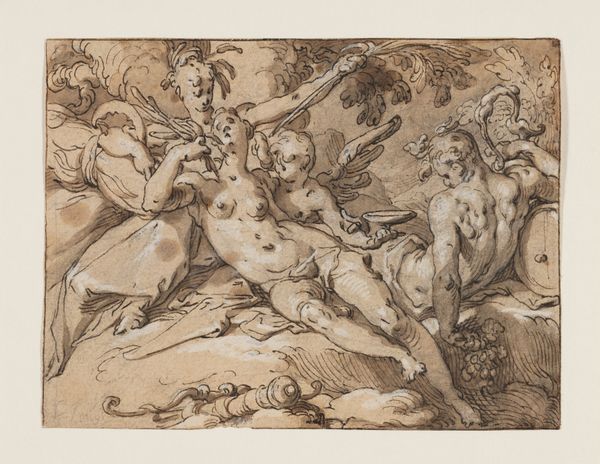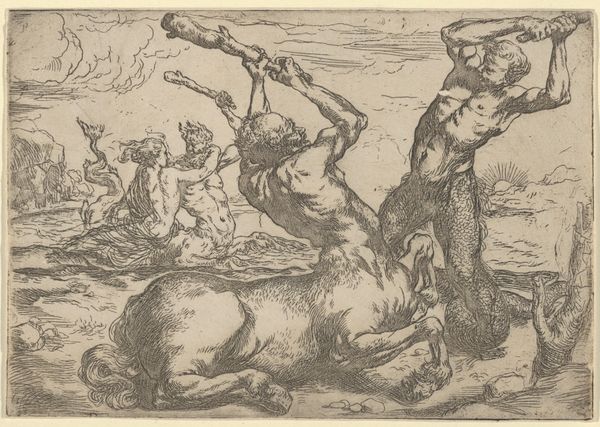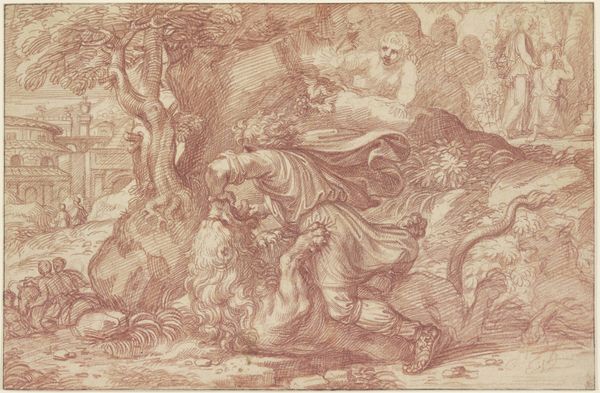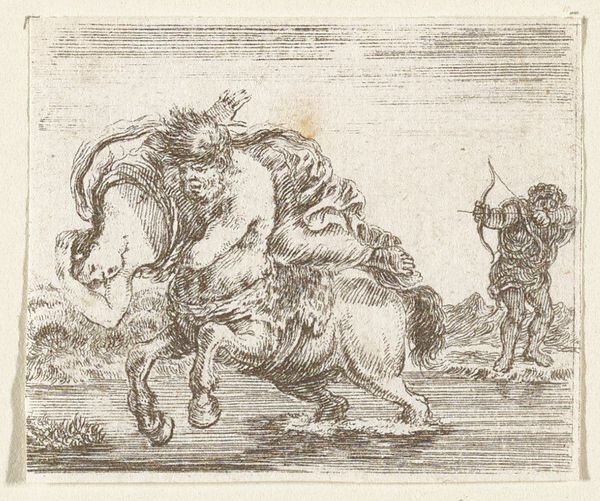
Dimensions: height 207 mm, width 402 mm
Copyright: Rijks Museum: Open Domain
Editor: This sepia ink drawing, "Venus Lamenting the Death of Adonis," by Giuseppe Cades from 1780, feels dramatic, almost theatrical, in its grief. What do you make of Cades' interpretation of this classic myth, viewed through a historical lens? Curator: The piece reflects the 18th-century fascination with classical themes, filtered through a renewed interest in the expression of heightened emotion. Romanticism’s dawn meant artists increasingly valued feeling. Considering how art academies were structuring artistic careers at the time, what statement might Cades be making? Editor: Perhaps he's demonstrating his mastery of depicting complex narratives and evoking pity, aligning himself with the academic emphasis on history painting, while hinting at Romanticism’s turn toward emotional intensity? Curator: Precisely. See how the composition directs our gaze? Venus, dramatically posed, becomes the focal point, framed by cherubic figures on one side, and the still form of Adonis, along with his loyal hound, on the other. It's a tableau designed to evoke a strong public response. What might viewers at the time expect in a portrayal of Venus? Editor: Given the academic and classical influences, I'd expect idealization of form, perhaps emphasizing her divine beauty even in sorrow? Curator: Exactly! The museum system that was rising in power needed artists like Cades to balance historical grandeur and moral teaching. In essence, what does this drawing, commissioned and viewed within a particular socio-political framework, say about the role of art in late 18th-century Rome? Editor: It suggests that art was meant to instruct, to inspire, and maybe to uphold the existing power structures through carefully managed emotion and familiar stories. I never thought about the museum world influencing the kind of feelings portrayed. Thanks! Curator: Indeed. Thinking about these factors changes our view. Every masterpiece we see has so much historical and cultural context interwoven in its story!
Comments
rijksmuseum about 2 years ago
⋮
As a draughtsman, Giuseppe Cades developed a personal form of Neoclassicism in which he combined his admiration for classical antiquity with the art of Raphael. Typical of this drawing is the mixture of heroism and irony. The felled hero Adonis, the epitome of masculine beauty, is lamented by a rather voluptuous Venus. Cades drew the scene for an extant painting in Palazzo Ruspoli in Rome.
Join the conversation
Join millions of artists and users on Artera today and experience the ultimate creative platform.
